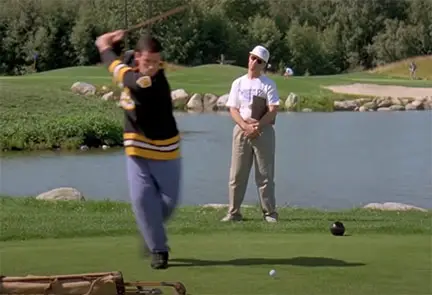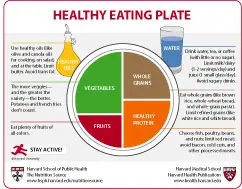
One of my all-time favourite sports movies is “Happy Gilmore,” in which an ex-hockey player, played by Adam Sandler, takes up golf and uses a driving technique that is half golf drive and half hockey slapshot.
It’s a technique that’s unlikely to be effective. Or is it? In fact, Fox Sport Network’s “Sport Science” studied Happy Gilmore’s technique to see if it could actually yield more driving yards. As a subject, they used pro golfer and 2008 PGA Player of the Year, Padraig Harrington. Harrington learned the Happy Gilmore technique, took some test wacks, then compared those drives to his average driving distance of 296 yards.
Rather surprisingly, Harrington’s Happy Gilmore drives were significantly longer than his traditional drives. Truly significant – in fact, 30 yards longer with an increase in club-head speed from 107 miles per hour to 114 miles per hour! Of interest, although initiated by a moving run-up, his body position during the swing and at contact were similar to that of his stationary technique.
This longer driving distance was repeated by internet golf instructor, Rick Shiels in 2019. His driving distance improved from a 300 yard average off a 110 mph swing to 337 yards with a 120 mph swing using the Happy Gilmore swing.
The explanation? The moving run-up provided extra momentum prior to ball contact and improved shoulder turn for better torso torque.
So why don’t more golfers use the Happy Gilmore technique? The risk of inconsistency and inaccuracy. As Harrington said, “I’m too cautious for that.” Rick Shields’ comment is “Does the Happy Gilmore swing work? It kind of does. To be honest, it takes a lot of practice. I’ve been trying that for a long time. It’s hard work. Lots of horrendous golf shots. I wouldn’t recommend it.”
Check out this video of the test by Rick Shiels.
Happy holidays…and Happy Gilmore too.

Dick Moss, Editor,
PE Update.com
To check out the PE Update.com website, click here
Physical Education Update
[tags]physical education,golf,golf driving,Happy Gilmore,>[/tags]









